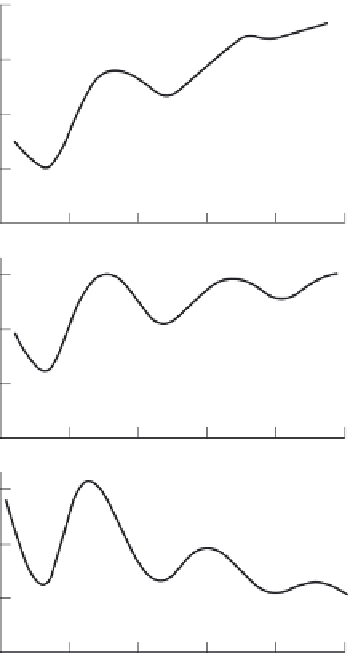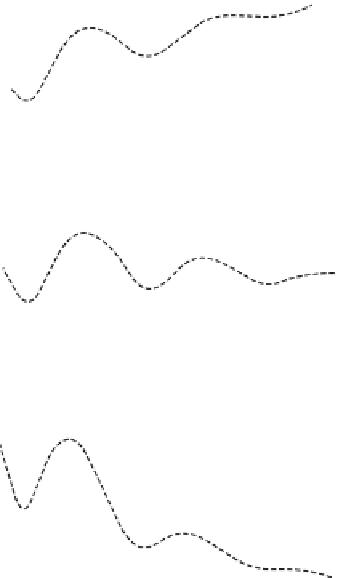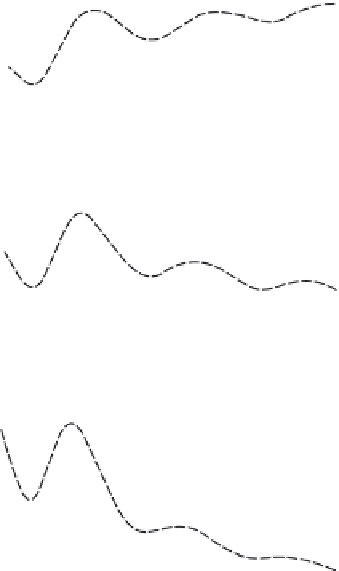Environmental Engineering Reference
In-Depth Information
the fi sh that will escape. We know that recruitment varies from year to year and it
was particularly good in 1969. As this large year class works its way through the
population, it can be seen as the temporary peak in years 6-8 of this hypothetical
management regime (Figure 7.10), but this is only incidental to the point to be made
here. The simulations show that overall catches achieved greatest levels in the top
graph, where fi shing effort was relatively low (26%). By contrast, the bottom graph
shows how a high fi shing effort (45%) produces lower, and declining catches. Just
as important in determining catches was mesh size: the largest mesh size (160 mm)
consistently produced the greatest yield (for any fi shing effort). Thus, by letting more
and larger fi sh escape, future catches are increased. Together, low effort and large
mesh size give the fi sh more opportunity to grow (and reproduce) before they are
caught, which is important because yield is measured in biomass, not simply in
numbers. Efforts of 45%, regardless of mesh size, or of 33% coupled with a small
mesh size (130 mm) all resulted in consistent declines in catches as a result of
overexploitation.
Sadly, Garrod and Jones' recommendations were ignored. Mesh sizes were eventu-
ally increased but not for 10 years and then only from 120 to 125 mm. Fishing effort
never dropped below 45% and catches of 900,000 tonnes were being taken in the
Fig. 7.10
Predictions of
a dynamic pool model
for a cod fi shery under
three levels of fi shing
effort and with three
different mesh sizes.
The largest effort (45%,
bottom panel) is clearly
unsustainable,
regardless of the mesh
size used. Largest
sustainable catches are
achieved with a low
fi shing effort (26%,
upper panel) and a
large mesh size. (After
Pitcher & Hart, 1982).
Fishing effort
Mesh sizes
800
160 mm
145 mm
26%
600
130 mm
400
200
0
0
5
10
15
20
25
160 mm
600
33%
145 mm
400
130 mm
200
0
0
5
10
15
20
25
600
45%
400
160 mm
200
145 mm
130 mm
0
0
5
10
15
20
25
Years of this regime






























Search WWH ::

Custom Search